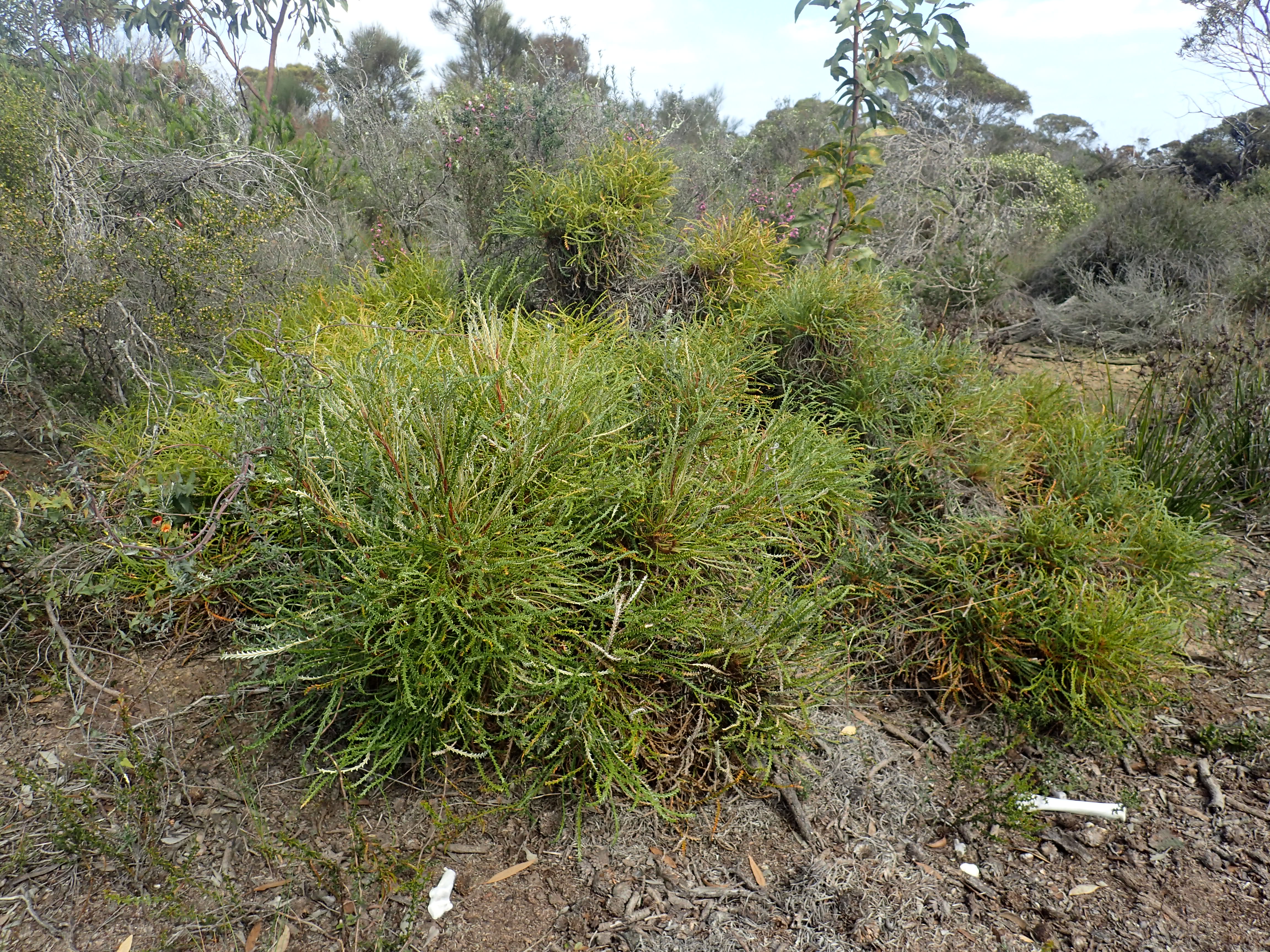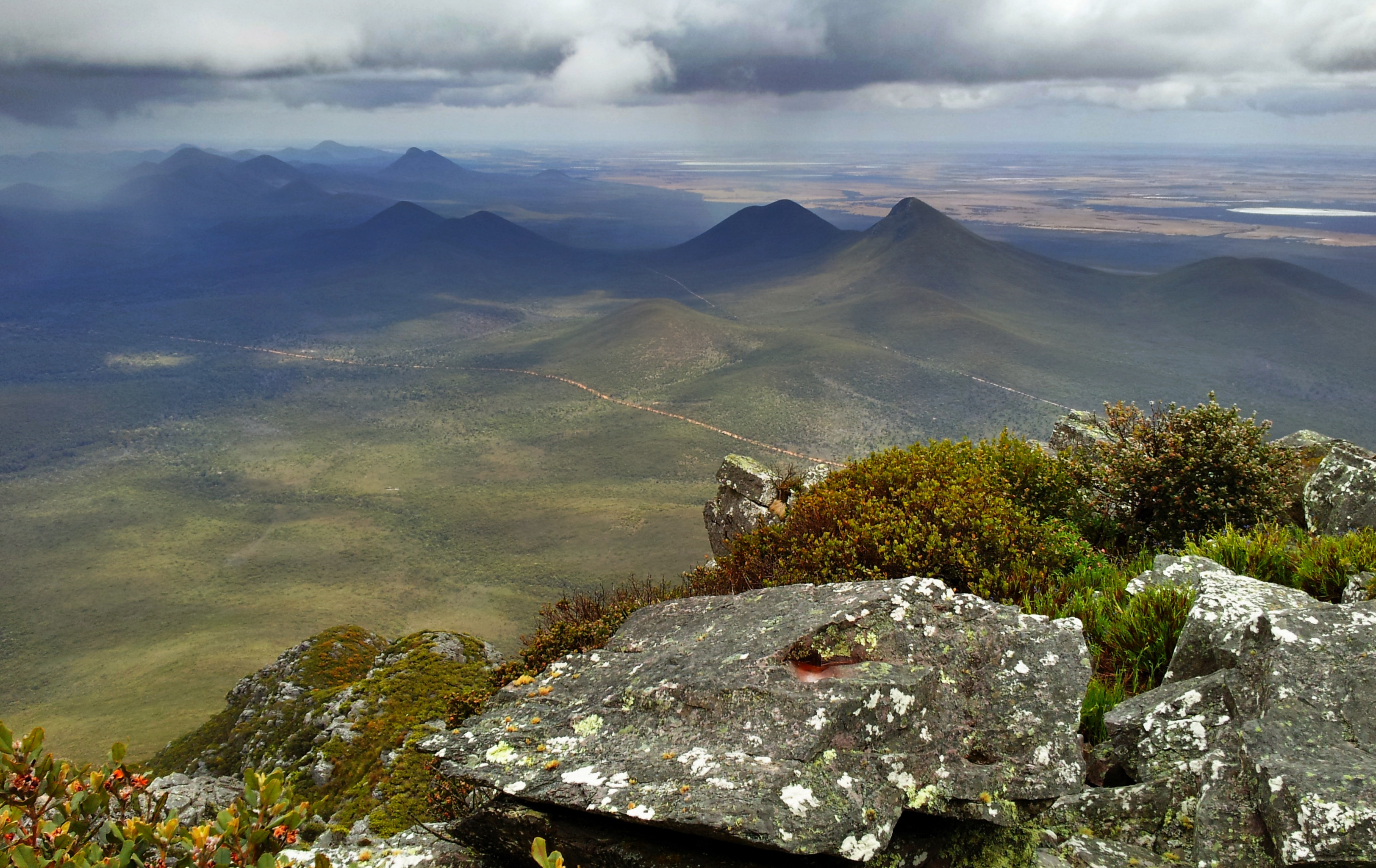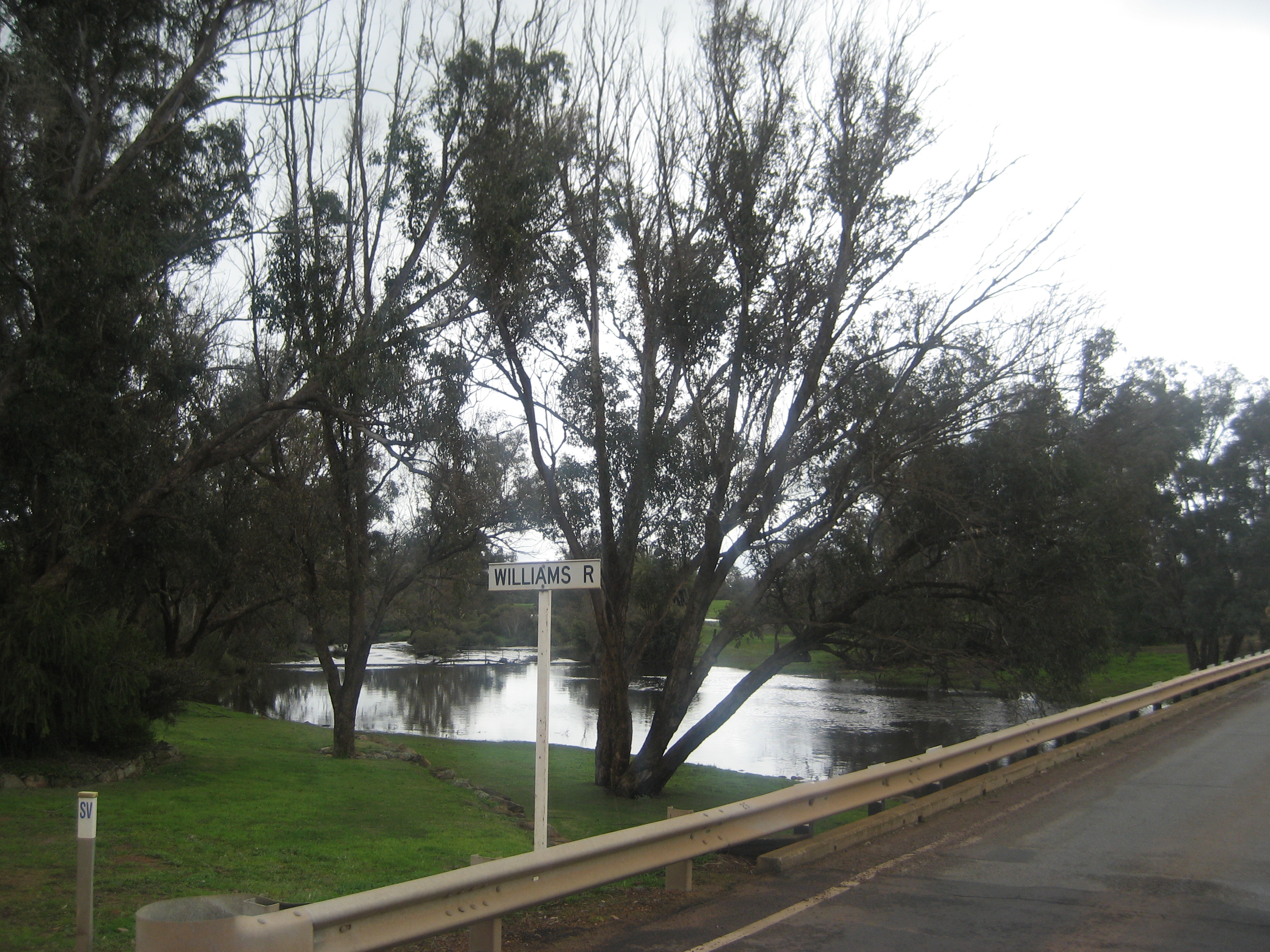|
Banksia Tenuis
''Banksia tenuis'' is a species of shrub that is endemic to the southwest of Western Australia. It has pinnatifid, serrated or smooth-edges leaves, golden brown and cream-coloured flowers in heads of about fifty-five and glabrous, egg-shaped follicles. Description ''Banksia tenuis'' is a shrub that typically grows to a height of or is a mat-like shrub spreading to wide, but it does not form a lignotuber. The leaves are linear in outline, long and wide on a petiole up to long. The leaves are curved or bent, sometimes pinnatifid or serrated with up to twenty teeth on each side, or with smooth edges. The flowers are golden brown and cream-coloured and arranged in heads of between forty-five and sixty-five with reddish brown, egg-shaped to oblong involucral bracts long at the base of the head. The perianth is long and the pistil long. Flowering occurs from March to July and the fruit is a glabrous, egg-shaped follicle long. Taxonomy and naming This species was first f ... [...More Info...] [...Related Items...] OR: [Wikipedia] [Google] [Baidu] |
Curtis's Botanical Magazine
''The Botanical Magazine; or Flower-Garden Displayed'', is an illustrated publication which began in 1787. The longest running botanical magazine, it is widely referred to by the subsequent name ''Curtis's Botanical Magazine''. Each of the issues contains a description, in formal yet accessible language, and is renowned for featuring the work of two centuries of botanical illustrators. Many plants received their first publication on the pages, and the description given was enhanced by the keenly detailed illustrations. History and profile The first issue, published on 1 February 1787, was begun by William Curtis, as both an illustrated gardening and botanical journal. Curtis was an apothecary and botanist who held a position at Kew Gardens, who had published the highly praised (but poorly sold) ''Flora Londinensis'' a few years before. The publication familiarized its readers with ornamental and exotic plants, which it presented in octavo format. Artists who had previously giv ... [...More Info...] [...Related Items...] OR: [Wikipedia] [Google] [Baidu] |
Robert Brown (botanist, Born 1773)
Robert Brown (21 December 1773 – 10 June 1858) was a Scottish botanist and paleobotanist who made important contributions to botany largely through his pioneering use of the microscope. His contributions include one of the earliest detailed descriptions of the cell nucleus and cytoplasmic streaming; the observation of Brownian motion; early work on plant pollination and fertilisation, including being the first to recognise the fundamental difference between gymnosperms and angiosperms; and some of the earliest studies in palynology. He also made numerous contributions to plant taxonomy, notably erecting a number of plant families that are still accepted today; and numerous Australian plant genera and species, the fruit of his exploration of that continent with Matthew Flinders. Early life Robert Brown was born in Montrose on 21 December 1773, in a house that existed on the site where Montrose Library currently stands. He was the son of James Brown, a minister in ... [...More Info...] [...Related Items...] OR: [Wikipedia] [Google] [Baidu] |
Climate Change
In common usage, climate change describes global warming—the ongoing increase in global average temperature—and its effects on Earth's climate system. Climate change in a broader sense also includes previous long-term changes to Earth's climate. The current rise in global average temperature is more rapid than previous changes, and is primarily caused by humans burning fossil fuels. Fossil fuel use, deforestation, and some agricultural and industrial practices increase greenhouse gases, notably carbon dioxide and methane. Greenhouse gases absorb some of the heat that the Earth radiates after it warms from sunlight. Larger amounts of these gases trap more heat in Earth's lower atmosphere, causing global warming. Due to climate change, deserts are expanding, while heat waves and wildfires are becoming more common. Increased warming in the Arctic has contributed to melting permafrost, glacial retreat and sea ice loss. Higher temperatures are also causing ... [...More Info...] [...Related Items...] OR: [Wikipedia] [Google] [Baidu] |
Jerramungup, Western Australia
Jerramungup is a Western Australian town located in the Great Southern agricultural region, southeast of Perth and west of the Gairdner River. The area was settled by Europeans prior to 1848, with the first homestead being built by John Hassell in 1848. The property was known as ''Jarramongup Station'' and was inherited by his son, Albert Young Hassell, who took up residence there with his wife Ethel after his father's death in 1885.Izett, EK 2014,Breaking new ground: early Australian ethnography in colonial women's writing, Doctor of Philosophy. The station was put up for sale by Edney Hassell and remained on the market for some time until it was acquired by the state government in 1950. The town of Jerramongup was established in 1953 to support a war service land settlement project that was initiated in 1949. The townsite was gazetted as Jerramungup on 12 August 1957, although the name Jerramongup remained in use until the 1960s. The local school was renamed Jerramungup i ... [...More Info...] [...Related Items...] OR: [Wikipedia] [Google] [Baidu] |
Stirling Range National Park
Stirling Range National Park is a national park in the Great Southern region of Western Australia, approximately south-east of Perth. Description It protects the Stirling Ranges, or Koikyennuruff, a range of mountains and hills over wide from west to east, stretching from the highway between Mount Barker and Cranbrook eastward past Gnowangerup. Notable features include Toolbrunup, Bluff Knoll – the tallest peak in the southwestern region – and a silhouette called The Sleeping Princess which is visible from the Porongurup Range. Popular recreational activities in the park include bushwalking, abseiling and gliding. Camping is permitted only in Moingup campsite within the park boundaries (fee applies). Other peaks which have tracks include Mt Trio, Talyuberlup Peak and Mt Magog. A premier walk known as The Stirling Ridge Walk is usually done over two days and includes Ellen Peak (the most easterly peak) and Bluff Knoll. History The traditional owners are the Mineng ... [...More Info...] [...Related Items...] OR: [Wikipedia] [Google] [Baidu] |
Autonym (botany)
In botanical nomenclature, autonyms are automatically created names, as regulated by the '' International Code of Nomenclature for algae, fungi, and plants'' that are created for certain subdivisions of genera and species, those that include the type of the genus or species. An autonym might not be mentioned in the publication that creates it as a side-effect. Autonyms "repeat unaltered" the genus name or species epithet of the taxon being subdivided, and no other name for that same subdivision is validly published (article 22.2). For example, ''Rubus'' subgenus ''Eubatus'' is not validly published, and the subgenus is known as ''Rubus'' subgen. ''Rubus''. Autonyms are cited without an author. The publication date of the autonym is taken to be the same as that of the subdivision(s) that automatically established the autonym, with some special provisions (the autonym is considered to have priority over the other names of the same rank established at the same time (article 11.6)). ... [...More Info...] [...Related Items...] OR: [Wikipedia] [Google] [Baidu] |
Cape Arid National Park
Cape Arid National Park is a national park located in Western Australia, southeast of Perth. The park is situated east of Esperance and lies on the shore of the south coast from the eastern end of the Recherche Archipelago. The bay at its eastern side is Israelite Bay, a locality often mentioned in Bureau of Meteorology weather reports as a geographical marker. The western end is known as Duke of Orleans Bay. Its coastline is defined by Cape Arid, a bay called Sandy Bight and, further east, Cape Pasley. History The first European to discover the area was the French Admiral Bruni D'Entrecasteaux in 1792 and he named it ''Cap Aride''; Matthew Flinders anglicized the name in 1802 and the park took its name from this feature. Pioneer graziers arrived in the area in the 1870s and the ruins of homesteads, dams and buildings as well as gravesites can be found near Pine Hill and Thomas Fishery. Bay whaling was conducted by Thomas Sherratt at Barrier Anchorage in the 1870s. John Tho ... [...More Info...] [...Related Items...] OR: [Wikipedia] [Google] [Baidu] |
Williams, Western Australia
Williams is a town located in the Wheatbelt region of Western Australia, south-southeast of the state capital, Perth along Albany Highway and 32 kilometres (20 mi) west of Narrogin. The Williams River passes through the town. At the 2016 census, Williams had a population of 411. History Williams is named after the Williams River that flows nearby. The river was sighted by Captain Thomas Bannister in 1831 while leading the first overland expedition from the Swan River Colony to King George Sound (now Albany), and was first shown on an 1833 map. More than likely, the name honours King William IV, who reigned in the United Kingdom from June 1830 until June 1837. The first British claims on land in the area occurred in 1832. In 1835 a party led by Governor James Stirling and John Septimus Roe surveyed a route joining King George Sound with York via Williams to encourage inland settlement. No settlement occurred until after Lieutenant Henry Bunbury explored the ... [...More Info...] [...Related Items...] OR: [Wikipedia] [Google] [Baidu] |
Darkan, Western Australia
Darkan is a town in the Wheatbelt region of Western Australia, between Collie and the Albany Highway on the Coalfields Highway. It is also the seat of the Shire of West Arthur. At the 2016 census, Darkan had a population of 403. History The area was originally settled by William John Gibbs and his family in the 1860s. Gibbs established a property called "Darkan", using a local Aboriginal name which means Black Rock. The townsite developed when the Collie to Narrogin railway line was built, and in 1906, the townsite was gazetted. The town grew quickly thereafter, with a Road Board being established and numerous shops and services being established in the following years. The railway closed in the early 1990s, but the surrounding productive wool growing and mixed farming area along with tourism have ensured the town's survival. In 1928 a 12-year-old girl Ivy Lewis was murdered by John Milner, who was later hanged for his crime. Present day Darkan is the social and political c ... [...More Info...] [...Related Items...] OR: [Wikipedia] [Google] [Baidu] |
Kwongan
Kwongan is plant community found in south-western Western Australia. The name is a Bibbelmun (Noongar) Aboriginal term of wide geographical use defined by Beard (1976) as Kwongan has replaced other terms applied by European botanists such as sand-heide (Diels 1906) or sand heath (Gardner 1942), giving priority to the language of people who have lived continuously in the southwest for more than 50,000 years. Recent archeological evidence shows occupation of the Kwongan for at least 25,500 years. Thus, kwongan has come again into common usage for the Southwest Australian Floristic Region's shrubland vegetation and associated countryside, equivalent to South Africa's fynbos, California's chaparral, France's maquis and Chile's matorral as seen in these other regions of the world experiencing a Mediterranean climate. Etymology To reflect contemporary orthographies, linguists strictly spell kwongan as (Douglas 1976, Dench 1994), or (von Brandenstein 1988). As with so many ot ... [...More Info...] [...Related Items...] OR: [Wikipedia] [Google] [Baidu] |
Latin
Latin (, or , ) is a classical language belonging to the Italic branch of the Indo-European languages. Latin was originally a dialect spoken in the lower Tiber area (then known as Latium) around present-day Rome, but through the power of the Roman Republic it became the dominant language in the Italian region and subsequently throughout the Roman Empire. Even after the fall of Western Rome, Latin remained the common language of international communication, science, scholarship and academia in Europe until well into the 18th century, when other regional vernaculars (including its own descendants, the Romance languages) supplanted it in common academic and political usage, and it eventually became a dead language in the modern linguistic definition. Latin is a highly inflected language, with three distinct genders (masculine, feminine, and neuter), six or seven noun cases (nominative, accusative, genitive, dative, ablative, and vocative), five declensions, four verb conjug ... [...More Info...] [...Related Items...] OR: [Wikipedia] [Google] [Baidu] |
Hakea Sericea
''Hakea sericea'', commonly known as bushy needlewood or silky hakea, is a large shrub with a profusion of mainly white flowers from July for several months. It is endemism, endemic to eastern Australia. It has become an environmental weed in some countries. Description ''Hakea sericea'' is a large spreading, bushy shrub and may grow to and does not form a lignotuber. The branchlets are densely covered in grey-whitish short, soft, woolly hairs. The inflorescence appear in umbels of 1–6 flowers in leaf axils, pinkish in bud and maturing to white. The inflorescence rachis is long and thickly covered in woolly, short, matted white hairs toward the end and rusty coloured at the base. The pedicel (botany), pedicels are long, slight to densely covered with long white hairs. The smooth perianth is long and the pistil long. The needle-shaped leaves are grooved on the undersurface and up to long and wide and ending in a sharp point long. The leaves are moderately covered with ... [...More Info...] [...Related Items...] OR: [Wikipedia] [Google] [Baidu] |

2.jpg)
.jpg)



